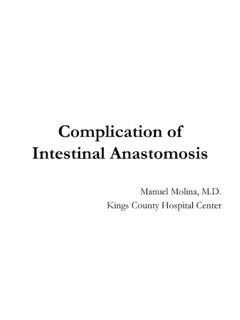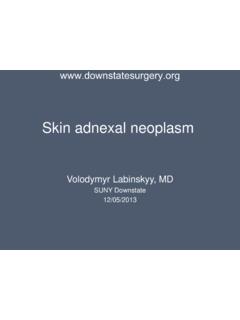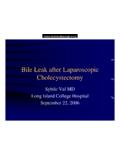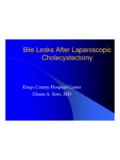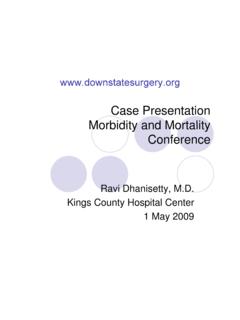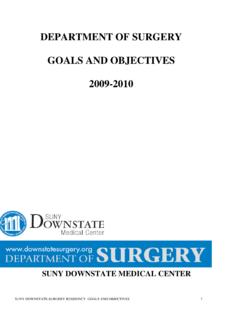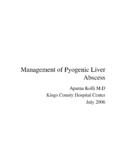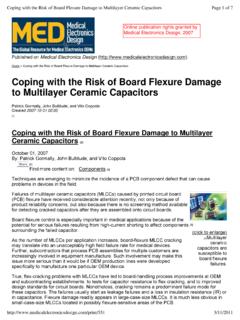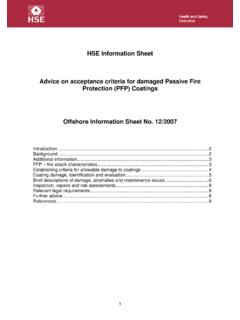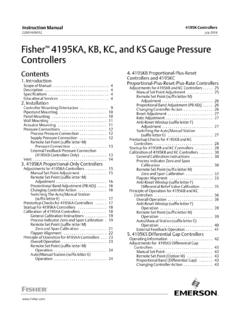Transcription of Malignant Colon Polyps - Department of Surgery at SUNY ...
1 Neoplastic Colon Polyps Joyce Au SUNY Downstate Grand Rounds, October 18, 2012 55M with Hepatitis C, COPD (FEV1=45%), s/p vasectomy, knee Surgery Meds: albuterol, flunisolide, mometasone, tiotropium Routine colonoscopy screening Multiple Polyps Pathology Diminutive transverse Colon polyp tubular adenoma cm sessile sigmoid polyp tubulovillous adenoma with foci of invasive adenocarcinoma Diminutive rectosigmoid polyp, and three 4 mm sigmoid Polyps serrated adenoma Despite negative margins, concern for draining lymph node bed Repeat colonoscopy for removal of remaining Polyps and tattooing of site of invasive carcinoma for Surgery Pathology 4 mm cecal polyp.
2 4 mm descending Colon polyp tubular adenoma Remnant of previous cm polyp benign Two flat sigmoid Polyps hyperplastic Polyps One flat sigmoid polyp sessile Presented to hospital for elective sigmoid resection Operative findings Tattooed area of sigmoid with no palpable mass Large and thick omentum; difficulty in identifying safe plane of dissection at splenic flexure Procedure: laparoscopic converted to open sigmoidectomy with primary end-to -end anastomosis, repair of bladder dome injury EBL=100 ml Postoperatively Extubated POD#1 Flatus on POD#3 and diet started and advanced as tolerated Discharged home on POD#6 with Foley Pathology: no malignancy.
3 9 LN negative Polyps Background Risk factors Treatment Screening for colorectal cancer Adenomas, serrated adenomas Occur in 33% of population by age 50, 50% by age 70 60% adenomatous Polyps are distal to splenic flexure Synchronous adenomas in 40% Adenoma-carcinoma causal relationship Almost all Colon cancer arises within an adenoma 30% incidence of residual adenomas in specimens Risk of cancer increases with larger and more Polyps High incidence of cancer in familial adenomatous polyposis syndrome Risk of cancer is 4% after 5 years and 14% after 10 years Pathways Traditional Begins with APC tumor suppressor gene on chromosome 5q for - catenin adenoma DCC tumor suppressor gene on chromosome 18 with
4 Neural cell adhesion molecule and alteration in apoptosis more advanced adenoma p53 tumor suppressor gene on chromosome 17 for cell cycle arrest or apoptosis for DNA damage carcinoma K- ras oncogene on chromosome 12 for signal transduction, increased replication and exophytic growth Serrated pathway Begins with BRAF oncogene mutation in serine-threonine kinase signaling DNA methylation, microsatellite instability Elderly women, smokers Larger, sessile, right Colon Polyps Mix of hyperplastic and adenomatous features FACTORS Histologic variants Tubular adenoma <5% Malignant Tubulovillous adenoma 20-25% Malignant Villous adenoma 35-40% Malignant Size Diminutive = <6 mm - < Malignant <1 1-2% Malignant >2 cm up to 40% Malignant et al.
5 Ann Surg 1979 Dysplasia Mild Malignant Moderate 18% Malignant Severe Malignant 5- 7% adenomatous Polyps have high-grade dysplasia; 3-5% have invasive carcinoma Have not yet invaded through muscularis mucosa so if completely excised, patient is cured Haggitt level for polypoid lesions Invasion into submucosa with increased risk of carcinoma, lymph node metastasis, cancer-related mortality KiKuchi classification for sessile lesions Sm1 = slight invasion of submucosa, 200-300 m Sm2 = intermediate invasion Sm3 = deep submucosal invasion to inner surface of muscularis propria Mayo Clinic series.
6 23% risk of LN mets Risk for lymph node metastasis is 8-15% in Malignant Polyps Unfavorable pathologic features: Submucosal invasion, Haggitt level 4 Poor differentiation, high-grade dysplasia Tumor budding - clusters of Malignant cells away from main site of submucosal invasion Lymphovascular invasion Resection margin <2 mm Complete colonoscopy with polypectomy National Polyp Study Winawer et al. NEJM 1993 National Polyp Study Adenomas progress into invasive adenocarcinoma Search and remove Polyps to prevent adenocarcinoma More recently Polypectomy leads to 53% reduction in colorectal cancer mortality Zauber et al.
7 NEJM 2012. Polypectomy technique Biopsy (<5 mm) Snare Piecemeal excision Endoscopic mucosal resection (EMR) EMR Saline injection into submucosal plane, suction cautery attachment, snare polypectomy For small (<1cm), flat / depressed lesions Curative for early cancers without LVI or capable of harboring a focal cancer If large, sessile, villous, then surgical resection Adverse outcomes in polypectomy Risk of death is 1 in 14000 Bleeding in per 1000 Perforation in up to 1 in 1000 Post-polypectomy syndrome in up to 3 in 1000 Cautery injury with microperforation and bacterial translocation Abdominal pain, fever, leukocytosis Resection margin If negative margin and no unfavorable pathologic feature, risk of adverse outcome (residual carcinoma, recurrence.)
8 Lymph node metastasis, decreased survival) If negative margin but have unfavorable pathologic feature, 18% risk of adverse outcome If +/indeterminate margins, 27% have adverse outcome Contraindications to polypectomy Signs of invasive malignancy (fungating, ulcerated, distorted, necrosis, involves surrounding bowel wall) Relative: bleeding diathesis, acute colitis Indication for colectomy Contraindication to polypectomy High risk pathologic features despite complete polypectomy (margin <3 mm, poor differentiation, LVI, Haggitt level 4) Initial screening Fecal occult blood testing (FOBT) Sigmoidoscopy 60 cm; use with FOBT or double barium enema study Every 5 years; if positive, colonoscopy Colonoscopy Double contrast barium enema (DCBE) For Polyps >1 cm For those who refuse or unable to have full colonoscopy Paired with flex sigmoidoscopy Every 5 years.
9 If positive, colonoscopy Glick. AJR 2000 CT colonography = virtual colonoscopy Air-distended, prepped Colon Identified 90% lesions >10 mm Every 5 years; if positive, colonoscopy Johnson et al. NEJM 2008 Yucel et al. AJR 2008 Category Initial Screening Average risk, asymptomatic (Age >50, consider >45 for African Americans) FOBT each year Flexible sigmoidoscopy every 5 years Colonoscopy every 5-10 years CT colonography every 5-10 years 1st degree relative with CRC, adenomatous Polyps at age <60 Two 2nd degree relatives with CRC Same as for average risk but starting at age 40 Colonoscopy every 5 years at age 40, or 10 years younger than age of earliest diagnosis in family Gene carrier or at risk for FAP Flexible sigmoidoscopy each year, starting at age 10-12 Gene carrier or at risk for HNPCC Colonoscopy every year, starting at age 20-25.
10 Or 10 years younger than age of earliest diagnosis in family MD Anderson Surgical Oncology Handbook, 5th edition, 2012 Surveillance screening after polypectomy Current Surgical Therapy, 10th edition Risk factors for malignancy include histology, size, and depth of invasion Polypectomy reduces incidence and mortality from colorectal cancer Past medical history and family history help direct appropriate screening for Polyps 1. The appropriate screening strategy for a 50 year old man with no family history of Colon cancer and a sibling with adenomatous Polyps removed at age 50 would be to begin at age 30, repeated every 2 years at age 40, repeated every 5 years and fecal occult testing at age 40, repeated every 5 years at age 50, repeated every 10 years and fecal occult testing at age 50, repeated every 5 years Findings at colonoscopy that indicate decreased interval for screening are all except polyp >1 cm hyperplastic rectal polyp c.

